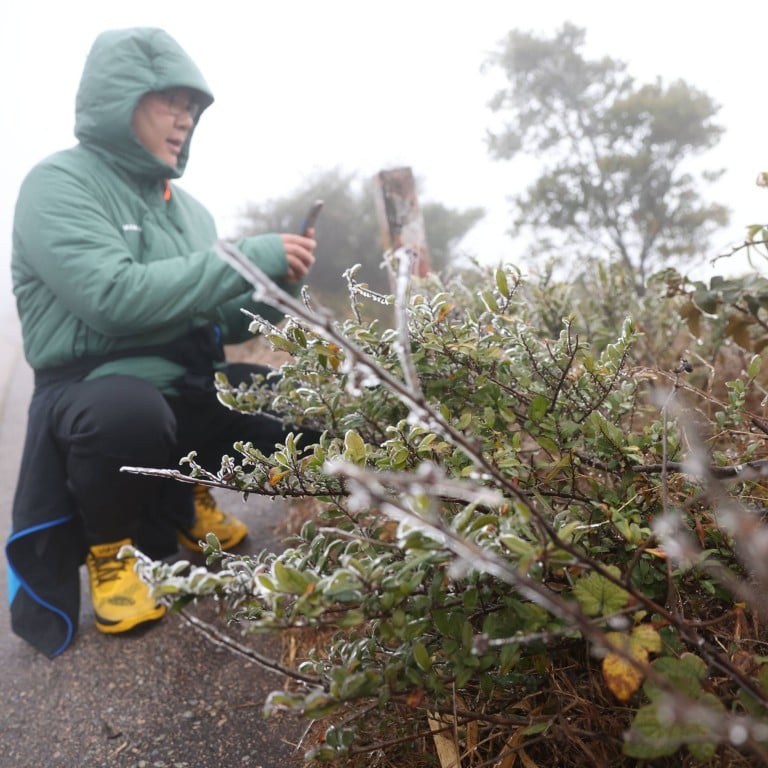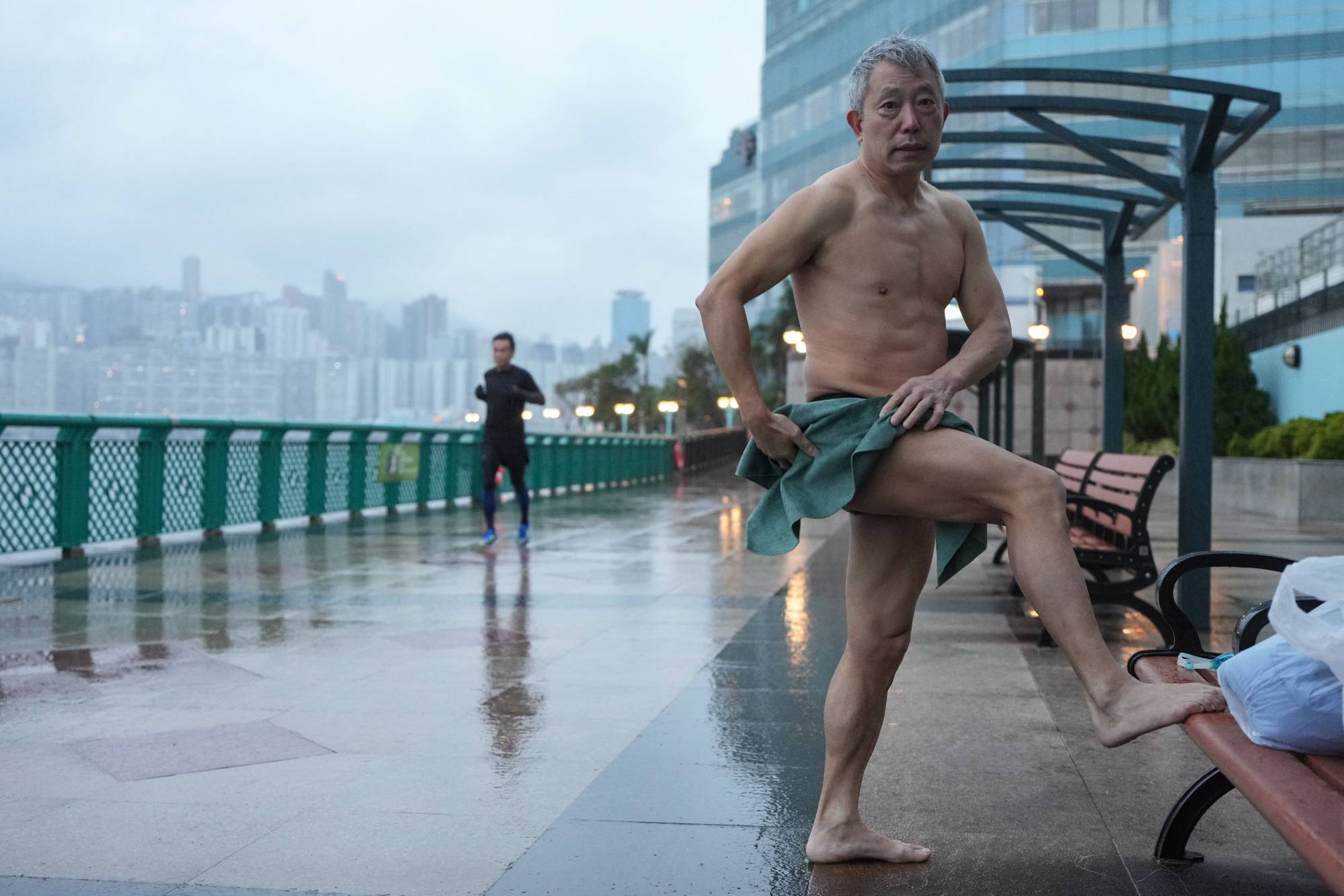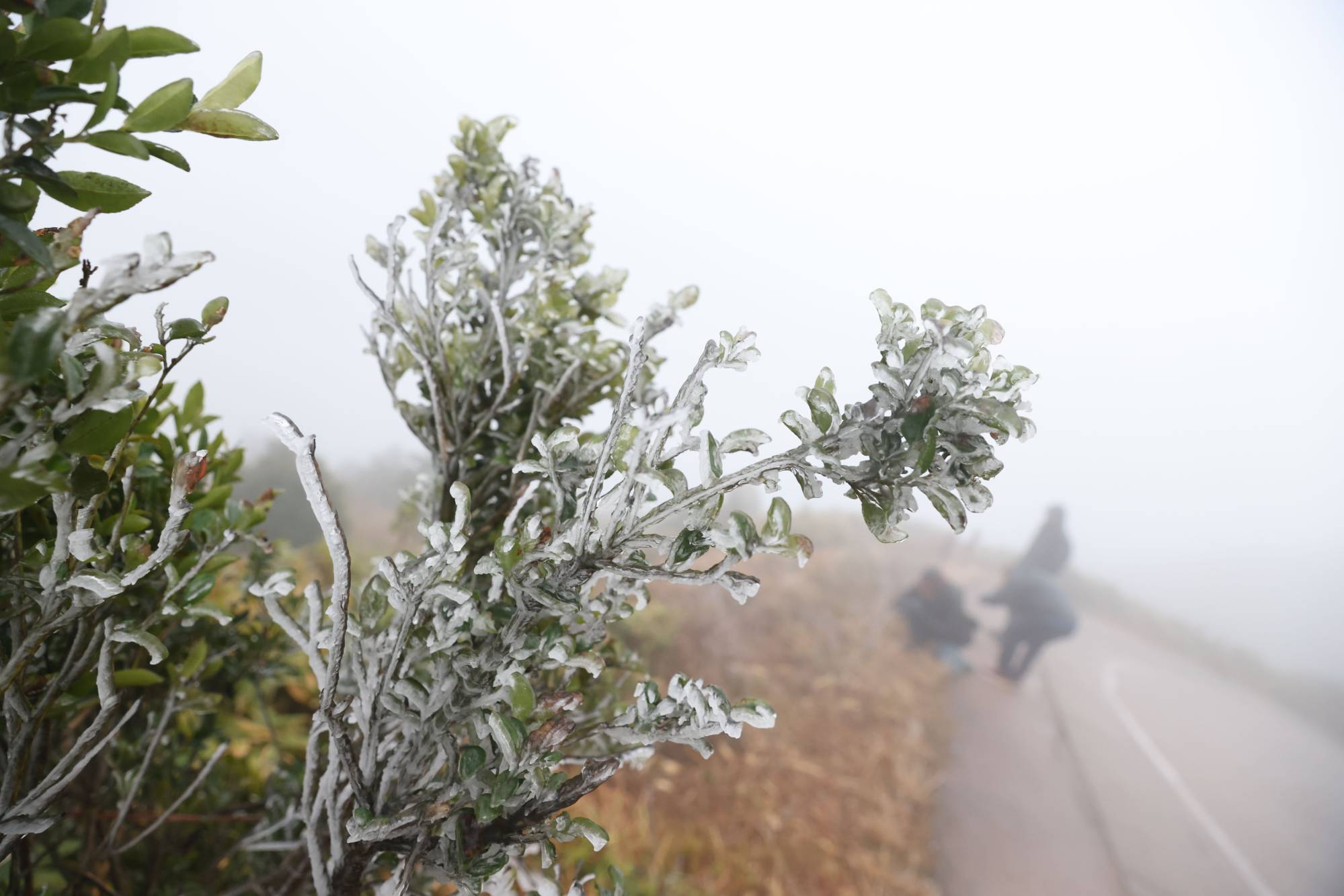
Hong Kong feels the chill as temperatures drop to 6 degrees Celsius, lowest this winter amid frost on highest peak
- Temperatures dip to 6 degrees Celsius in urban areas as city records coldest day so far this winter
- Frost forms on Tai Mo Shan, city’s highest peak, after firefighters appeal to public not to head to hills as icy roads may delay rescue efforts if people get into trouble
Hong Kong recorded its coldest day yet this winter on Tuesday, with temperatures in urban areas dipping to 6 degrees Celsius (42.8 Fahrenheit) and frost forming on the city’s highest peak.
The chilly weather will continue on Wednesday morning with temperatures of about 6 degrees in urban areas, and light patches of rain and icy conditions expected on high ground.
On Tuesday, the city was greeted by cloudy skies with light sporadic rain throughout the day. Temperatures hovered between 6 and 10 degrees in urban areas, while the mercury in the New Territories dropped a couple of degrees lower.

The Hong Kong Observatory recorded a minimum temperature of 6.3 degrees at its headquarters in Tsim Sha Tsui on Tuesday, the fourth coldest day logged there in the 21st century.
In January 2016, the weather station recorded a minimum temperature of 3.1 degrees.
Hongkongers bundled up in their coats and scarves when out and about, while some clothing stores were packed with shoppers looking for winter wear.
The Post observed frost on plants on Tai Mo Shan, the city’s highest mountain, as temperatures dropped to minus 2.4 degrees at around 6am.
Temperatures on the 957-metre (3,140-feet) mountain rose slightly to about 2 degrees at around 9am, but stayed between minus 2 degrees and 2 degrees in the afternoon.
The weather remained dry during the day with moderate to fresh northerly winds, and strong winds offshore as well as on high ground.
Firefighters have urged the public to assess their own abilities before conducting outdoor activities or heading for a hike amid a warning of ice forming on high ground.
But a few residents were spotted walking up the mountain in the morning to catch a glimpse of the rare frost.
About six swimmers were also seen in the waters off Hung Hom before sunrise.

The Observatory said the city was under the influence of an intense winter monsoon coupled with a broad band of clouds and rain.
It added the cold weather brought by the intense winter monsoon was expected to last until Thursday, and temperatures would rise over the weekend.
The city could expect more rainy weather next week, the forecaster said.
Near freezing temperatures were also observed on the peaks of Ngong Ping and Tate’s Cairn, while the mercury hovered at around 5 degrees in a number of areas in the New Territories including Tai Po, Sha Tin and Yuen Long.
“Members of the public, motorists and cyclists should be aware of the danger on slippery roads,” the Observatory said.

Lanes in both directions of Tai Mo Shan Road remained closed to traffic due to cold weather, as of Tuesday evening.
Jerry Nip Yuen-fung, chairman of the Fire Services Department Staffs General Association, earlier said frozen road conditions might delay rescue efforts if people got into trouble.
Nip added that people not used to cold weather might underestimate the impact of lower temperatures on their bodies and have insufficient equipment to keep themselves warm and safe.
“Those driving to higher ground may be unaware that there is a possibility that their vehicle engines and water tanks might freeze, and if they try to walk down the mountain, they could slip and fall on the frozen ground,” he said.
Hong Kong hotline for elderly takes more than 1,300 calls after cold spell hits
He pointed to an incident in January 2016, when 100 people called for help after they headed for Tai Mo Shan in a bid to catch a glimpse of frost that had formed in the sub-zero conditions.
At least 300 firefighters were deployed to rescue people trapped on the hill after they developed hypothermia or injured themselves in the slippery conditions.
A hiker went missing on Tai Mo Shan in sub-zero temperatures in December after he called for help and said he could no longer continue hiking.
Hong Kong set for very cold start to week; mercury to fall to 7 degrees Celsius
Nip said the fire service had bought more cold weather rescue equipment such as crampons, but he pointed out icy roads meant ambulances could not get up steep inclines, which hampered rescue efforts.
“I hope citizens can consider whether they have the ability or equipment to chase frost as this poses a huge risk to themselves and a huge challenge to the firefighters,” he added.
“These people affect society greatly if they persist without thinking through the consequences.”

